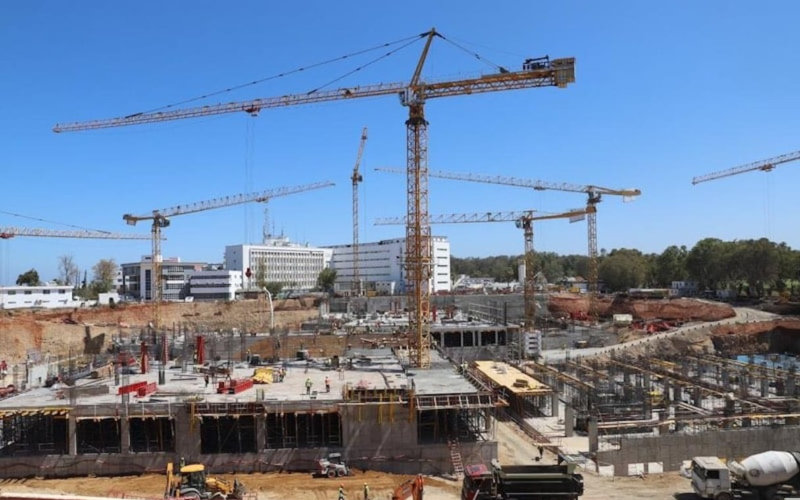Morocco Diverts Hospital Workers to Rush World Cup Stadium, Sparking Healthcare vs. Sports Debate

Dozens of workers have been diverted from the construction site of the Ibn Sina University Hospital to complete the Prince Moulay Abdellah stadium in Rabat, which is scheduled to host a 2026 World Cup qualifying match between Morocco and Niger in September and other football competitions later.
Is Morocco prioritizing sports over health? The workers on the Ibn Sina Hospital project, with a capacity of over 1,000 beds and a cost of around 6 billion dirhams (600 million dollars), have been temporarily transferred, or "borrowed", to accelerate the work at the Prince Moulay Abdellah stadium in Rabat, reports Morocco World News. This measure aims to meet the delivery deadlines promised by Fouzi Lekjaa, president of the Royal Moroccan Football Federation (FRMF). The recently reconstructed Moulay Abdellah stadium, with a capacity of nearly 68,500 seats, has been closed since 2023 for a complete renovation. The initial completion deadline set by Lekjaa for July 31 was not met. The official inauguration of the infrastructure will finally take place on September 5 with a 2026 World Cup qualifying match between Morocco and Niger.
However, giving priority to the renovation of the stadium by delaying the construction project of the Ibn Sina University Hospital, launched by King Mohammed VI in May 2022, is provoking reactions from observers. According to many of them, the key question is whether it is logical to prioritize a sports infrastructure over a strategic health project serving thousands of citizens. Is Morocco’s image as a successful organizer of sporting events a priority over fundamental rights such as access to healthcare?, they question. In the eyes of the observers, the Ibn Sina Hospital project is considered an absolute priority, but the decision to reduce its workforce in favor of the stadium reflects a painful contradiction between the focus on "appearance" and the fundamental needs of citizens.
Questions are being raised about national priorities. Is Morocco moving towards a strategy that effectively reconciles its fundamental development needs and its international image? Or are we still trapped in the logic of a "two-speed Morocco", where a stadium is completed in extra time while the opening of an indispensable hospital is postponed?, observers wonder.
Related Articles
-

Desperate for Success: Moroccan Footballer Swims to Spain in Daring Career Gamble
23 August 2025
-

Dutch-Born Star Ihattaren Pledges Allegiance to Morocco, Snubs Netherlands National Team
23 August 2025
-

Injury Woes Mount: Man United’s Mazraoui Sidelined as World Cup Qualifiers Loom
23 August 2025
-

Morocco’s World Cup Hero Yahya Attiat-Allah Reveals Transfer Saga: From Dreams to Disappointment
23 August 2025
-

Morocco Edges Tanzania to Reach African Nations Semis as Madagascar Stuns Kenya in Penalty Drama
22 August 2025